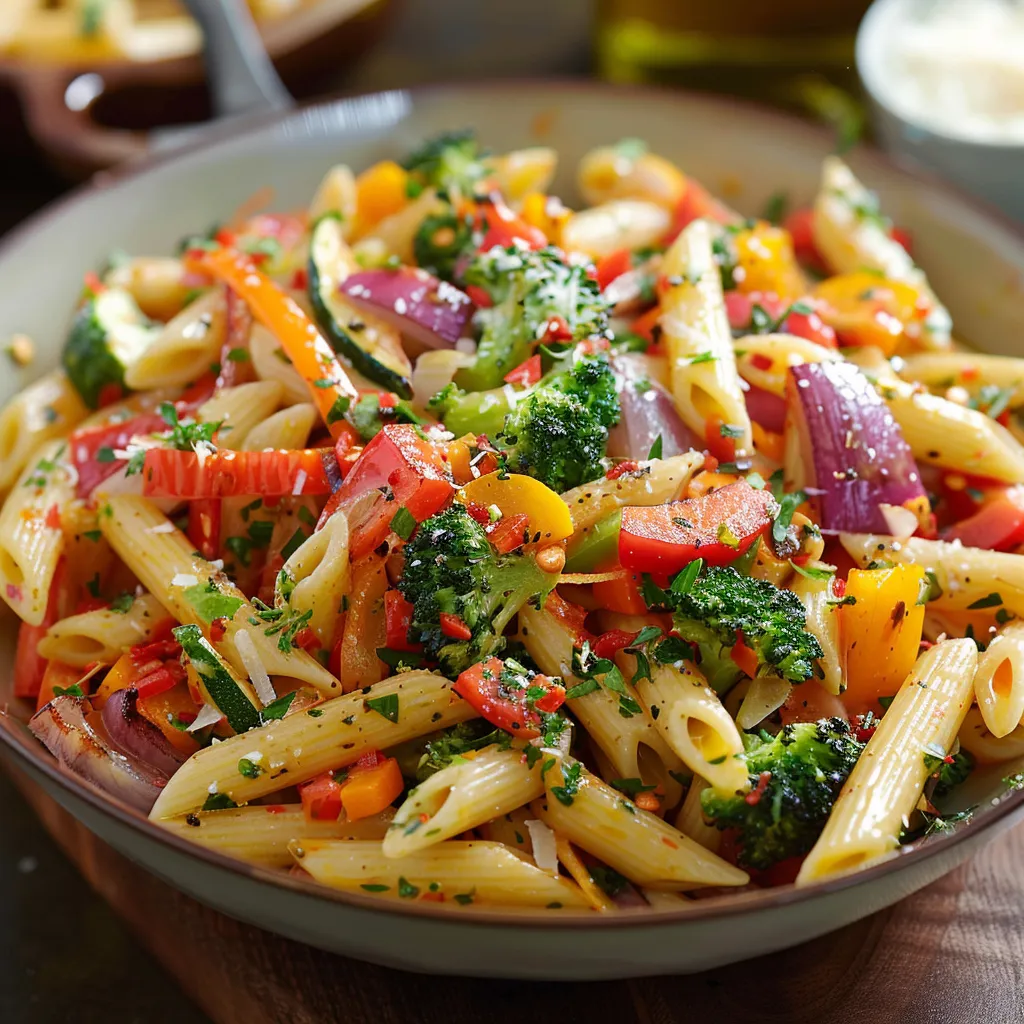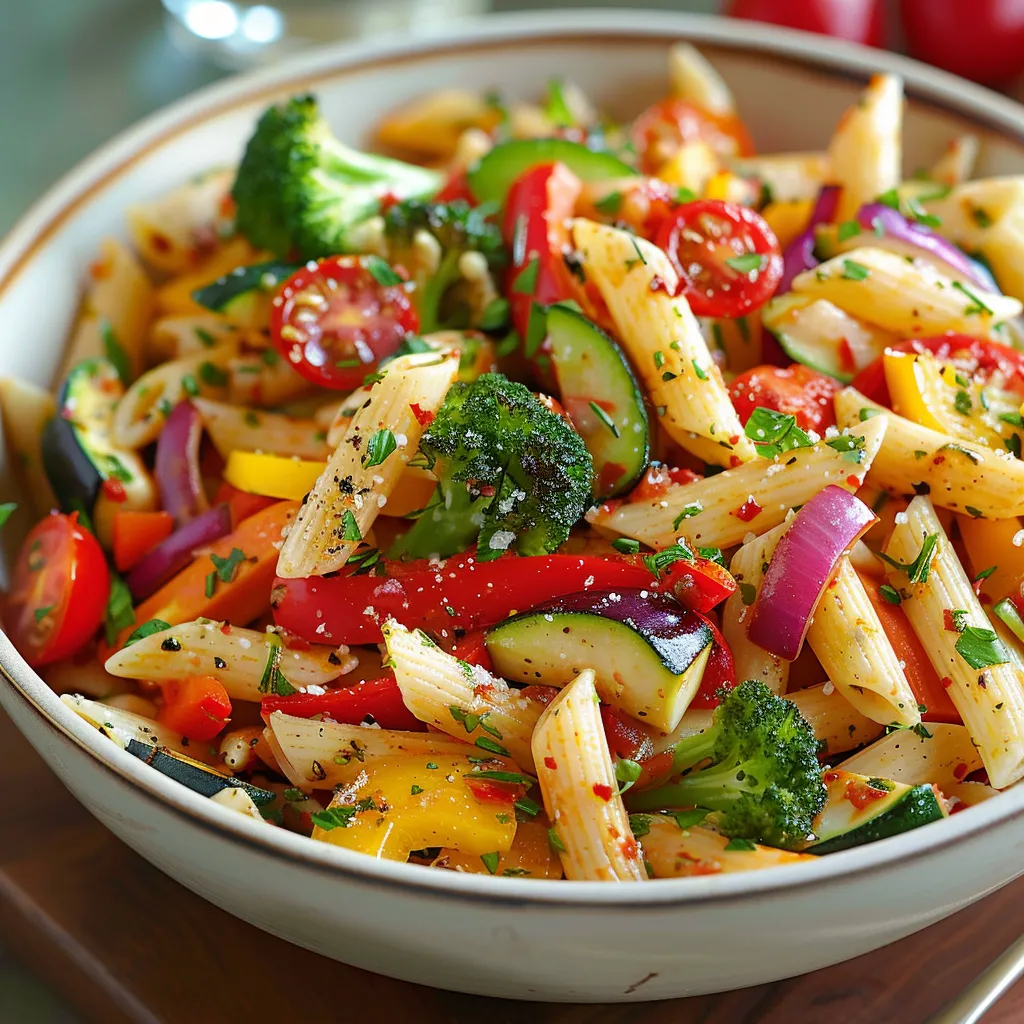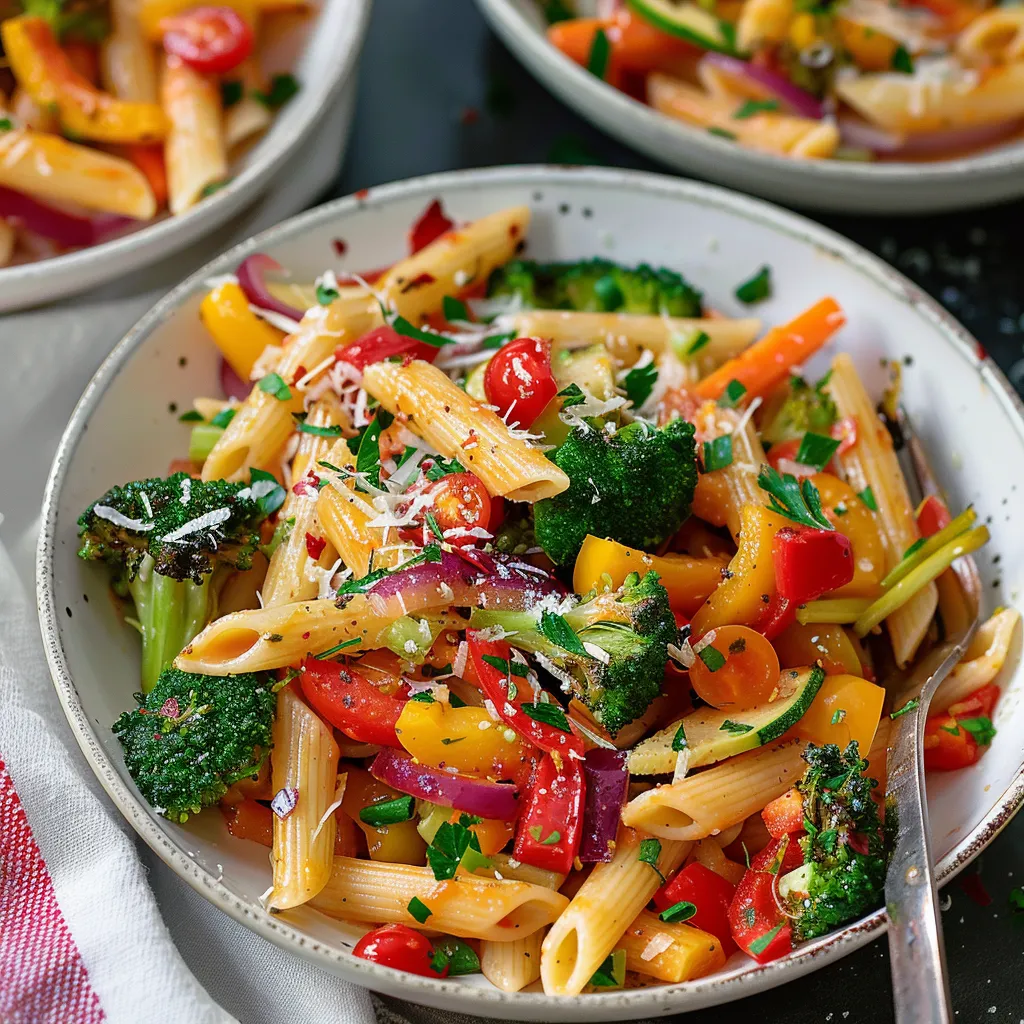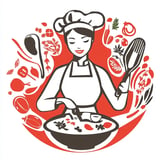 Pin to Favorites
Pin to Favorites
Pasta Primavera transforms a simple bowl of noodles into a vibrant celebration of vegetables that delights both the eye and the palate. Each forkful delivers al dente pasta coated in a light, flavorful sauce that perfectly complements the tender-crisp medley of colorful vegetables. Despite its Italian-sounding name, this American creation has become a beloved staple that brings restaurant-quality flavor to your home kitchen with minimal effort. The beauty of this dish lies in its versatility and visual appeal – a rainbow of vegetables glistening with olive oil, brightened with lemon, and enriched with freshly grated parmigiano.
Last week, I made this for my neighbor who was recovering from surgery, and her teenage son – who typically pushes vegetables to the side of his plate – asked for seconds. There's something magical about how the light sauce and pasta transform ordinary vegetables into something irresistible.
Essential Ingredients and Selection Tips
- Penne Pasta: The tubular shape captures small pieces of vegetables and sauce in every bite. Cook it just until al dente as it will continue to absorb moisture from the sauce.
- Fresh Vegetables: A colorful mix of red onion, carrots, broccoli, bell peppers, squash, zucchini, and tomatoes creates both visual appeal and textural contrast.
- Parmigiano Cheese: Freshly grated Parmigiano-Reggiano provides a depth of flavor that pre-grated versions can't match.
- Fresh Lemon Juice: Always use freshly squeezed for a bright, clean flavor that balances the richness of the olive oil and cheese.
 Pin to Favorites
Pin to Favorites
Detailed Cooking Instructions
- Prepare the Pasta Water:
- Bring 4-5 quarts of water to a boil and add 1 tbsp salt. Cook 12 oz penne pasta until al dente (9-11 minutes). Reserve ½ cup of pasta water before draining.
- Create Your Mise en Place:
- Julienne 1 carrot, cut 1 cup of broccoli into florets, dice 1 bell pepper, slice 1 small zucchini and squash, halve 1 cup cherry tomatoes, and mince 3 cloves garlic.
- Begin the Vegetable Sauté:
- Heat 3 tbsp olive oil over medium-high heat. Sauté 1 sliced red onion and julienned carrot for 2 minutes.
- Add Vegetables in Stages:
- Add broccoli and bell pepper, cooking for 2 minutes. Then add zucchini and squash, cooking another 2-3 minutes until just tender.
- Incorporate Aromatics:
- Stir in cherry tomatoes, minced garlic, and 2 tsp Italian seasoning. Cook for 2 minutes until tomatoes soften and garlic is fragrant.
- Combine Pasta and Vegetables:
- Transfer the sautéed vegetables to a large bowl or the pasta pot. Add the drained pasta and toss with 2 tbsp fresh lemon juice.
- Create the Sauce:
- Gradually mix in reserved pasta water, starting with 2 tbsp, to create a silky sauce that coats the pasta.
- Finish with Cheese and Herbs:
- Stir in ¼ cup freshly grated parmigiano and 2 tbsp chopped parsley. Serve immediately with extra parmigiano on the side.
My first attempt at this dish taught me that overcooking the vegetables transforms a vibrant primavera into a dull, mushy disappointment. I've learned to keep the heat high and the cooking time brief to maintain that perfect tender-crisp texture.
The pasta water serves as the secret ingredient that transforms this dish. The starchy liquid creates an emulsion when combined with the olive oil and cheese, coating each piece of pasta and vegetable with a light, silky sauce.
Despite its Italian-sounding name, Pasta Primavera represents a uniquely American contribution to pasta cuisine. Created in the 1970s by chef Sirio Maccioni in New York City, it exemplifies the American approach of celebrating abundance through a colorful medley of vegetables.
What makes this dish particularly special is its chameleon-like ability to transform based on seasonal availability. In spring, it features tender asparagus and peas; summer brings zucchini and bell peppers; fall welcomes butternut squash; and winter highlights broccoli and cauliflower.
I serve this pasta as a centerpiece for casual entertaining, often accompanied by nothing more than a simple green salad and perhaps some crusty bread. The empty bowl at the end of the meal and requests for the recipe are testaments to its universal appeal – a colorful, vegetable-forward dish that satisfies without feeling heavy or overly indulgent.
 Pin to Favorites
Pin to Favorites
Frequently Asked Questions
- → Can I use different vegetables in this Pasta Primavera?
- Absolutely! Pasta Primavera is very adaptable. Feel free to use whatever vegetables you have on hand - asparagus, mushrooms, peas, spinach, or cherry tomatoes all work well. It's a great recipe for using up vegetables in your fridge.
- → What type of pasta works best for Pasta Primavera?
- While this recipe calls for penne, any medium pasta shape works well. Try farfalle (bow ties), rotini (spirals), or fusilli. Shorter shapes tend to mix better with the vegetable pieces than long pasta like spaghetti.
- → Can I make this Pasta Primavera ahead of time?
- This dish is best served fresh, but you can prepare the vegetables ahead of time and refrigerate them until you're ready to cook. When reheating leftovers, add a splash of water or olive oil to refresh the pasta.
- → How can I make this Pasta Primavera more substantial?
- To make this a heartier meal, add protein like grilled chicken, shrimp, or white beans. You could also toss in some pine nuts or walnuts for extra texture and nutrition.
- → Is there a way to make this Pasta Primavera dairy-free?
- Yes, simply omit the Parmesan cheese or replace it with nutritional yeast for a similar savory flavor. You might want to add a bit more salt and lemon juice to compensate for the missing Parmesan.
